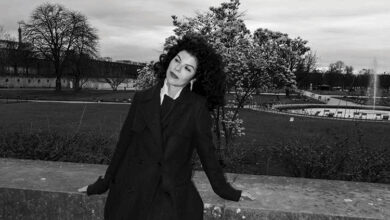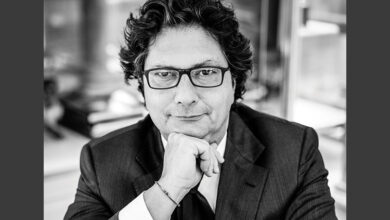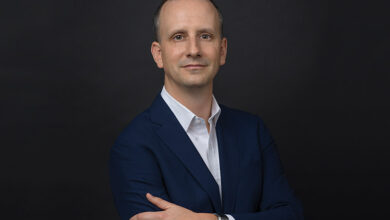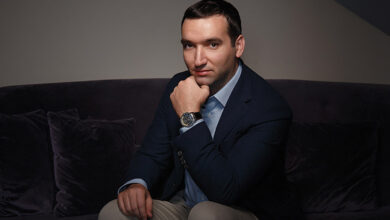Korloff, a Cut above
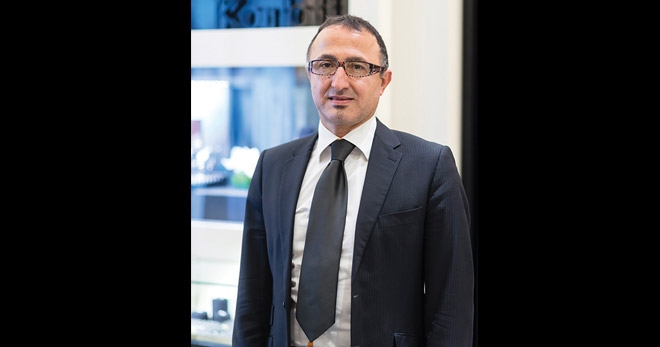
The name Korloff has become a byword in the worlds of haute joaillerie and haute horlogerie as well as for perfumes and accessories. “Day & Night” magazine had the privilege of meeting Bassam Azakir, Managing Partner of Korloff Joaillier, during his recent visit to Dubai
The house of Korloff burst upon the haute joaillerie scene in 1978, when Daniel Paillasseur conceived the brand. Central to the brand story is the legendary Korloff Noir, the largest black diamond – an 88 carat diamond with 57 perfect edges and a deep, rich black colour. Azakir expounds on the brand’s current focus on Korloff Mariage, the Korloff Cut and the brand’s future plans.

Can you tell us about the Mariage and the collaboration with Behbehani Group?
Our Mariage project started four years ago. We have just opened our fifth boutique two weeks ago; we have one each in Kuwait, Dubai, Qatar, Saudi Arabia and back home in Azerbaijan. In Dubai, the Korloff boutique in The Dubai Mall has both Korloff Prestige and Korloff Mariage. The project is going as planned; we are targeting local young couples in the Middle East and have grown from 17 per cent to 20 per cent. We are a young brand and realized that no brand is catering to the local tastes with an international signature. The market is untapped and we have made our mark on it; we have succeeded beyond our expectation.
Our relationship with Behbehani is a partnership, a friendship and even more – it is that of a family. We have different activities going on with them in Kuwait and in the UAE, and we are aiming for more development. It is a partnership based on trust, with goals being met. Whatever we are aiming for is being achieved, with targets always being exceeded.

How did your partnership with Behbehani as your sole agent in Kuwait extend to the UAE, and will this extend to other areas?
It was not planned; it just happened. We were discussing Dubai and why we weren’t here. From there, we decided to be here and we made it happen. We were planning to break with our local agent and, of course, as a European brand, we need a local partner. The thing with Ali Behbehani is that there is no need for too much discussion. In just five minutes, we agreed to do all the groundwork before they came in. He agreed and told us to go ahead.
Are there any plans to extend the market outside the UAE?
Right now, we are concentrating on the UAE. We want to extend from Dubai to Abu Dhabi and onward. We are of course open to ideas; not exactly extending the other markets but to other activities.

How hard is it attracting the local population in each country?
It is hard. This is why we are sitting here today. We would like the Behbehani group to transmit our ideas to the local population, to the local ladies and so on. Our Mariage in Dubai is catering not only to the UAE population, but to the GCC population. Thirty per cent of Korloff Mariage clients in the UAE are people from the UAE, while 70 per cent are from the GCC. We are selling a lot to Saudi and Qatari visitors.
Of all that Korloff offers – jewellery, watches, perfumes, and accessories – which would you consider your main business?
Jewellery is our main business. We were originally in the diamond business – we have our 88 Facet Cuts and our 73 Facet Cuts. We originally cut diamonds in Antwerp and sold them as a group. From there, we launched the Korloff brand and expanded to jewellery in the ‘70s, to watches in the ‘80s, to accessories in the ‘90s, and perfumes in the 2000s. We built our know-how and business strategy from our experience in the diamond industry. Our main business still remains diamonds, even though our margins from diamonds are lesser. Our perfumes make the biggest margins. Today, the perfume business represents five per cent of our activities, but it brings back more margins.

How do you separate the margins from the revenues of the different products you offer?
The more an activity is industrial, the more you can afford to have extra margin. Jewellery is handmade; if you produce either one piece or 1,000 pieces of jewellery, it costs the same and does not change anything, whereas it is different for watches as it is an industrialised function and economies of scale apply.
What is so special about the Karloff Cut?
The main business of our maison is the jewellery. We wanted to have a brand signature, not in our products but in our raw material. We focused on our core material – our diamonds. It is extremely difficult to do this because when we are controlling the raw material, we are controlling nature and it is extremely difficult to control this.
We have our partners in Antwerp; they are the fourth generation of diamond jewellers and they have the know-how. With their assistance, seven years ago, we created the 73 Facets and emerald chain. This comprises more than 30 per cent of our line today. The round shape with 88 Facets was launched last year. All of them are certified by the International Gemological Institute of Antwerp (IGI) with the identity of the Korloff Cut. So today, with those two cuts we are a unique brand – with registered cuts recognised by the IGI.
Daniel Paillasseur, the founder of the company, named the Korloff Cut as a financial asset in the French Stock Exchange three years ago; a major achievement. The financial sheet of the French Stock Exchange carries weekly quotations of the Korloff Cut. The price quoted is for two carats and above as it is for investment purposes. Now you can invest in the Korloff Cut as you would invest in the stock exchange; it is no longer only a jewellery piece but an investment tool.
This is a unique achievement, as no other brand has done this kind of thing. With the Korloff Cut, we have been able to not only control the raw material but also been able to convert it into an investment tool. Since it is patented and also involves a lot of know-how, others cannot replicate the Korloff Cut.
What do you consider as the best market for Korloff now?
It was and is Japan; Japan has been our first market for jewellery since the beginning. We sell approximately 80 per cent to 85 per cent of our jewellery there. For watches, it is the Middle East, no question about it. For accessories also, it is the Middle East because there are a lot of corporate activities going on here. Both watches and jewellery are sold all over the world. In some countries, the market is more jewellery-oriented, in others it is watches. Because the Korloff brand is quite diverse, there are both advantages and disadvantages; the drawback is that we have to invest in more lines and keep creating more.
Do you have any plans to add more to the lines?
We would like to increase our activity in perfumes. It was launched five years ago and has enjoyed incredible success. In the UAE, it is distributed by the Paris Gallery. It is not yet a major activity, but we would like to increase this. For the past year, we have been in discussion about a line in leather. We are looking at small- and medium-sized leather products for both men and women.
Additionally, we need to continue investing in our existing lines. As of now, we are still an independent company with our own funds. So we need to prioritise where we need to invest this year or the next three years.

How do you manage to increase the diversity of your lines and products?
For now, it is still being done with our own funds; our company is totally independent, is privately owned, and we are not at present seeking to open up for capital.
How many countries is Korloff currently available in? Are there any untapped markets?
Our products are available in more than 60 countries. We started our own subsidiary in the US more than five years ago and it still in the developing stage. It is not an easy market; it is difficult to penetrate, maintain and develop business, especially for a company like us as it takes a lot of investment. We are going slowly; we have around 40 points of sale. We are working with independent retailers and we are growing slowly but steadily. We would like to increase this much more.



